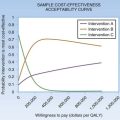185 Antibiotic Recommendations
Acute Bacterial Meningitis
Neonates (<1 month old): Combination treatment with ampicillin (200 mg/kg/day IV divided every 6 hours) and cefotaxime (300 mg/kg/day IV divided every 6 hours) targets the most common pathogens, which are group B Streptococcus, E. coli, and Listeria species.
Age 1 month to 50 years: Ceftriaxone (adults: 2 g IV every 12 hours; children: 100 mg/kg/day [maximum, 2 g] IV divided every 12 hours) with vancomycin (adults: 15-20 mg/kg [maximum, 2 g] IV every 12 hours; children: 15 mg/kg [maximum, 2 g] IV every 6 hours) provides coverage against S. pneumoniae (including penicillin-resistant strains), Neisseria meningitidis, and Haemophilus influenzae (although now rare because of the Hib vaccine).
Age greater than 50 years: Ampicillin (2 g IV every 4 hours), ceftriaxone (2 g IV every 12 hours), and vancomycin (15 to 20 mg/kg [maximum, 2 g] IV every 12 hours) are combined to cover S. pneumoniae, Listeria species, and gram-negative bacilli.
Postoperative/trauma: S. pneumoniae, S. aureus (including MRSA), and gram-negative bacilli (including Pseudomonas aeruginosa) are common pathogens in this setting; thus, ceftazidime (2 g IV every 8 hours) combined with vancomycin (15 to 20 mg/kg [maximum, 2 g] IV every 12 hours) is recommended.
Sexually Transmitted Diseases
Brouwer MC, McIntyre P, de Gans J, et al. Corticosteroids for bacterial meningitis. Cochrane Database Syst Rev. (9):2010. CD004405
Centers for Disease Control and Prevention. Sexually transmitted diseases: treatment guidelines, 2010. MMWR Morb Mortal Wkly Rep. 2010;59:1–109.
Gilbert DN, Moellering RC, Eliopoulous GM, et al. The Sanford guide to antimicrobial therapy, 40th ed. Sperryville, Va: Antimicrobial Therapy; 2010.
Liu C, Bayer A, Cosgrove S, et al. Clinical practice guidelines by the Infectious Diseases Society of America for the treatment of methicillin-resistant Staphylococcus aureus infections in adults and children: executive summary. Clin Infect Dis. 2011;52:285–292.
Mandell LA, Bartlett JG, Dowell SF, et al. Update of practice guidelines for the management of community-acquired pneumonia in immunocompetent adults. Clin Infect Dis. 2003;37:1405–1433.
Niederman MS, Mandell LA, Anzueto A, et al. Guidelines for the management of adults with community-acquired pneumonia: diagnosis, assessment of severity, antimicrobial therapy, and prevention. Am J Respir Crit Care Med. 2001;163:1730–1754.






